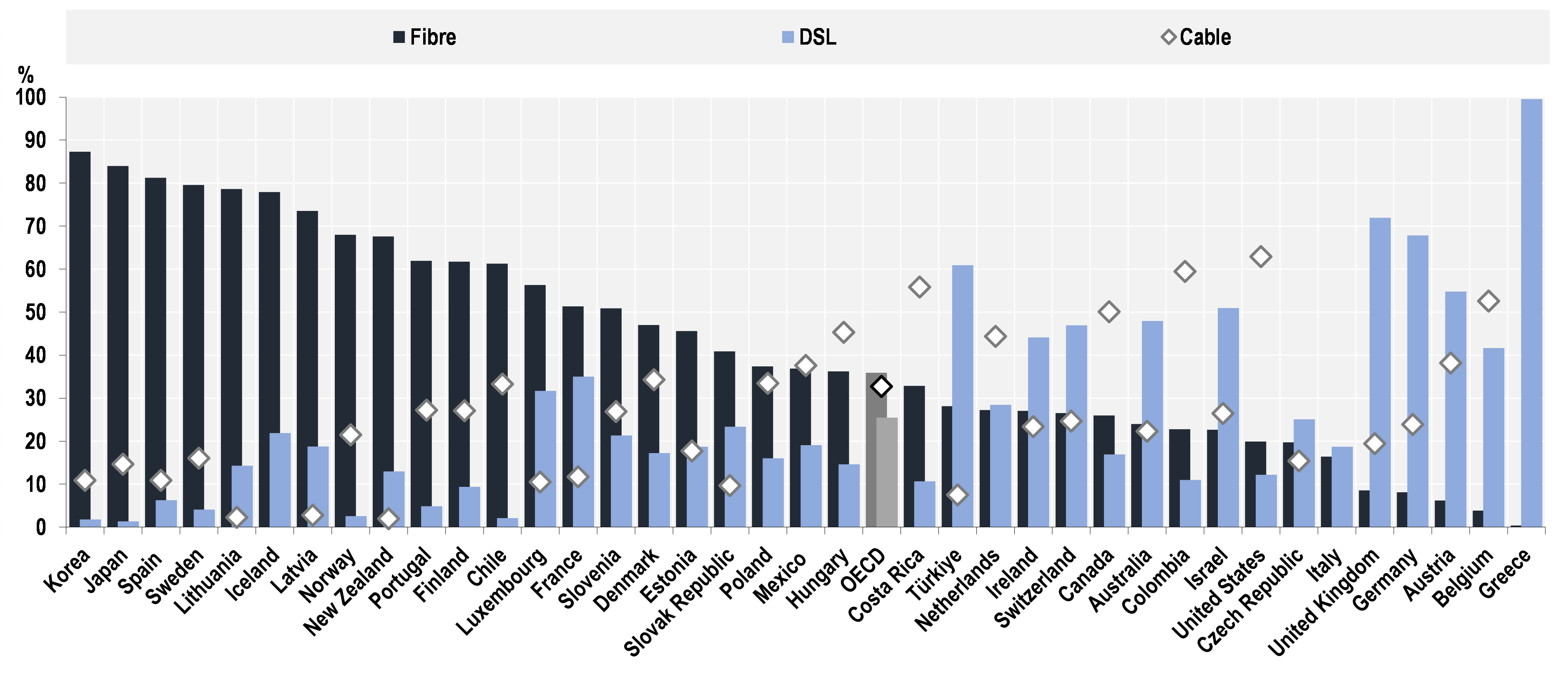High-speed fibre is now the primary fixed broadband technology in 19 out of 38 OECD countries, according to the latest data. Among these countries, 15 have a share of fibre subscriptions of over 50%.
The latest update of the OECD Broadband Portal shows a 12.3% rise in fibre broadband subscriptions across OECD countries between June 2021 and June 2022, a slightly slower growth rate than the previous 12 months. The need to bolster remote working capacity has remained even as many workers physically returned to the office in 2022, driving demand for fibre connections that provide fast upload and download speeds. Overall, fibre now accounts for 36% of fixed broadband subscriptions in the 38 OECD member countries, up from 22% five years ago.
Korea, Japan and Spain have the highest fibre penetration rates in the OECD at 87%, 84% and 81%, respectively, being among the seven countries with a fibre share of total fixed broadband subscriptions of 70% or above. The highest fibre growth rates in Latin America were in Costa Rica, Chile and Colombia (51%, 35% and 32%, respectively), while in Europe they were Belgium, the United Kingdom and Ireland (87%, 47% and 40%, respectively).
The latest update of the Broadband Portal features 5G subscriptions for the first time, with 14 OECD countries now able to show 5G data as part of their overall mobile broadband data. Overall, of all 38 OECD countries, 5G services are available in 36, with the number of 5G subscriptions representing 17% of mobile broadband subscriptions (in countries with available data). Denmark (41%, 3.5 million subscriptions), Korea (28.5%, 24.6m) and Japan (21%, 51.5m) have seen the highest take-up. Mobile broadband continued to grow overall, with a 6% increase in subscriptions in the year to June 2022.
Cable grew by a more modest 2% in the year to June 2022 and is now declining in 18 countries. It remains the leading fixed broadband technology in eight OECD countries, and is dominant in North and South America, with subscriptions in the United States, Colombia and Costa Rica accounting for 63%, 59% and 56% of the total, respectively (although in Chile fibre has overtaken cable). In Europe, cable remains popular in Belgium, Hungary and the Netherlands, with 53%, 45% and 44%, respectively.
DSL subscriptions fell by 8.5% over the same period, with several OECD countries showing sharp declines. While DSL remains the main broadband technology in several countries, some saw sharp declines in subscriptions, notably Norway (-64%), Chile (-49%) and Sweden (-41%).
Fibre, DSL and cable in total fixed broadband subscriptions, June 2022

Overall, fixed broadband subscriptions in OECD countries totalled 476 million in June 2022, up from 463 million a year earlier, with an average of 34.7 subscriptions per 100 inhabitants. Mobile broadband subscriptions totalled 1.76 billion in June 2022, up from 1.66 billion a year earlier, with an average of 128 subscriptions per 100 inhabitants.
Download broadband data, charts, and penetration maps by country at http://oe.cd/broadband.
